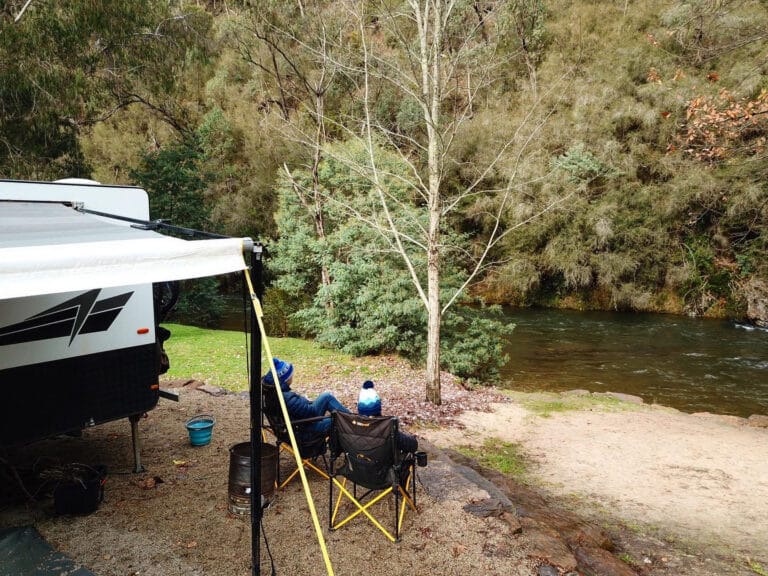
Caravan bike racks are a popular accessory for travelling families. However, fitting them aftermarket is not as simple as it seems. These are the five pitfalls to be aware of.
With so many families hitting the road, attention turns to keeping the kids entertained. This usually means bringing their bicycles along. Bikes aren’t just for kids though, many adults bring their bikes along in order to keep fit. In addition, with the rising popularity of eBikes and folding eBikes, riding has become even more accessible.
The problem is, if your caravan didn’t come with bike racks (which they rarely do), you will likely need to have them fitted. Unfortunately, this is not as simple as it may seem. You see, bicycles weigh quite a lot, especially electric ones, and this in itself presents quite a few issues.
Average bicycle weights
| Type and size of bicycle | Typical weight range | |
| Road Bikes | 8 to 9 kg | |
| Mountain Bikes | 9 to 13 kg | |
| Beach Cruisers | 15 to 18 kg | |
| Kids’ Bikes | 10 to 12 kg | |
| Electric Bikes | 17 to 31 kg |
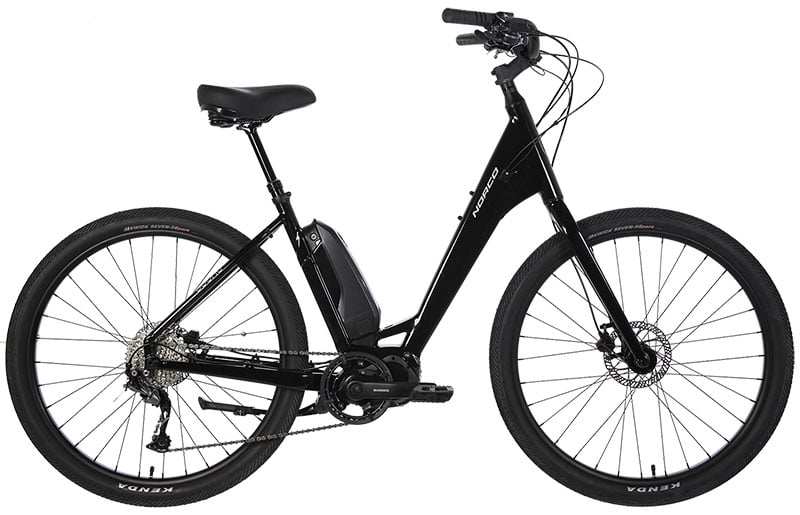
Remember, these weights are for individual bikes. It is more than likely you will want to carry more than one bike. For a typical family of four, you could be looking at adding around 50kg to your load.
Next, you will need to have a bike rack on your caravan that is capable of holding the bikes steady while travelling over Australia’s less-than-fantastic roads. Again, depending on how many bikes you need to carry, the racks will have their own weight. You could be adding another 10 to 20 kg or more. It all adds up rather quickly.
All this aside, let’s assume you’ve got all these issues sorted out and you’re ready to fit your bike rack to your caravan. It is not as simple as just bolting it to any part of the van or camper. There are a lot of things to consider.
These are five common mistakes people make when fitting bike racks:
Consider your tow ball weight
Most vans and campers will be designed in such a way as to make it easy for owners to get their weight distribution right. Particularly when it comes to tow-ball weight. The general rule of thumb is to have between 8% and 10% of the loaded weight of the trailer over the tow ball.
So a caravan that weighs 2,500kg fully loaded should have a tow ball weight of around 250kg. Now, let’s assume you want to add a bike rack on top of the toolbox on the caravan’s A-frame. We’ll just look at adding two adult mountain bikes for now. You could expect the bikes and the rack to hold them to weigh around 30kg all up. That may not sound like much but that weight over the toolbox will likely add around 20 to 25 kg to the tow ball weight.
If the maximum tow ball weight of your tow vehicle is only 250kg, adding the bikes and rack to your caravan will put you over this limit. This could have a detrimental effect on the handling of your rig, not to mention the legal implications.
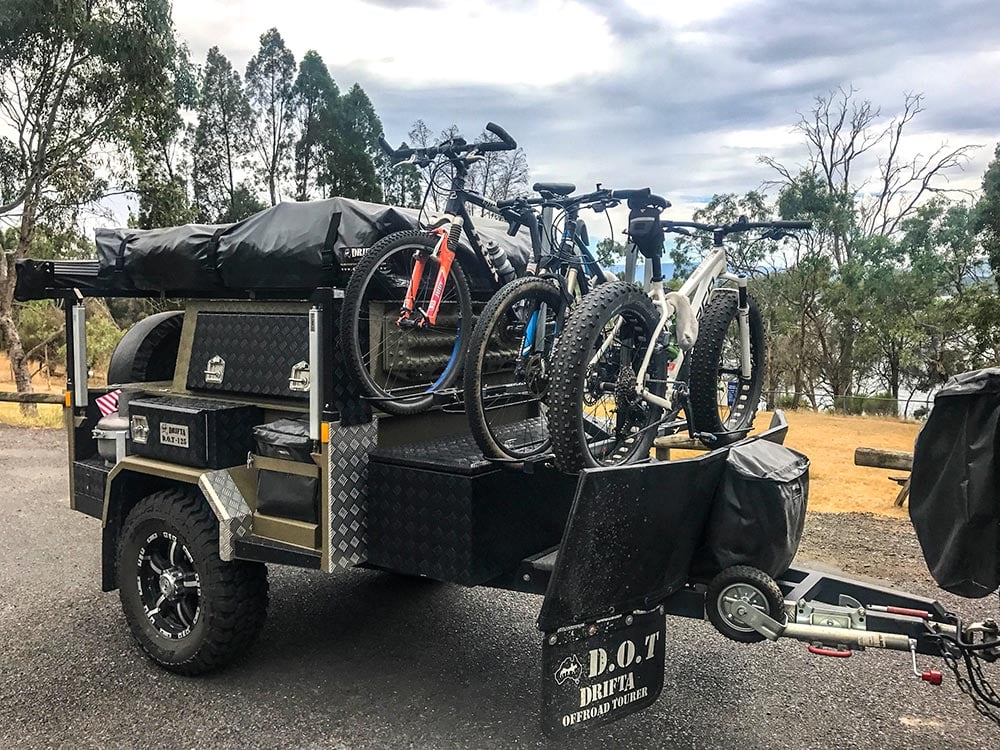
If putting a bike rack on the front of your caravan is the only solution available to you, we suggest you invest in a set of tow ball scales. That way you can rearrange some of your gear in order to compensate and get the tow ball weight right.
Consider your rear end
Just as adding weight to the front of your caravan can affect its handling, putting the bike rack on the back will as well. In fact, when it comes to caravan stability, this is probably the worst place to add weight.
We’ve all seen those videos demonstrating how adding weight to the rear of a caravan affects its stability. The reason for this is the extra weight on the rear of the trailer will lessen the tow ball weight. Anything less than 8% of the overall weight of the van as tow ball weight will likely make the van extremely unstable, resulting in the wobbles. You can counteract this effect to some degree by rearranging the gear in your trailer to transfer weight back to the front, but this is rarely successful.
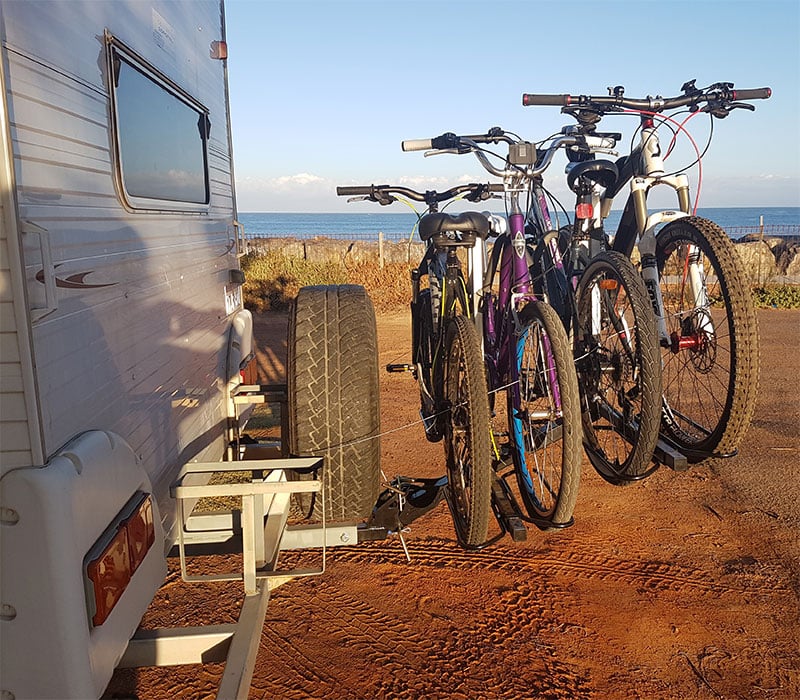
Is your caravan up to the job?
When manufacturers build a caravan with the intention to fit a bike rack, they will usually incorporate additional bracing to the frame or structure. If you’re thinking about adding a bike rack to an existing caravan, you will be living in hope that the existing structure will be capable of supporting this load. Remember, you could be looking at adding at least 30 kg and most caravan timber frames would unlikely have been designed with this in mind.
If a bike rack on the back of your caravan is your only choice, contact the manufacturer and ask about suitability. Consider also, limiting the number of bikes you carry to perhaps just one.
Can you still see the lights and number plates?
All trailers on Australian roads must be built to conform to the Australian Design Rules or ADRs, specifically the technical requirements of VSB1. These requirements state that all lamps and reflectors on a trailer must be installed to ensure “no part of the trailer or its equipment obstructs the lamp output”.
In other words, you can’t just go and put a huge bike rack on the back of your caravan or camper without ensuring it, or the bikes on it, don’t obstruct the trailer’s lights in any way. This requirement also extends to the visibility of the registration plate on the trailer. Doing so could land you with a hefty fine.
You may have to fit a secondary set of lights and registration plate if fitting your bike rack this way.
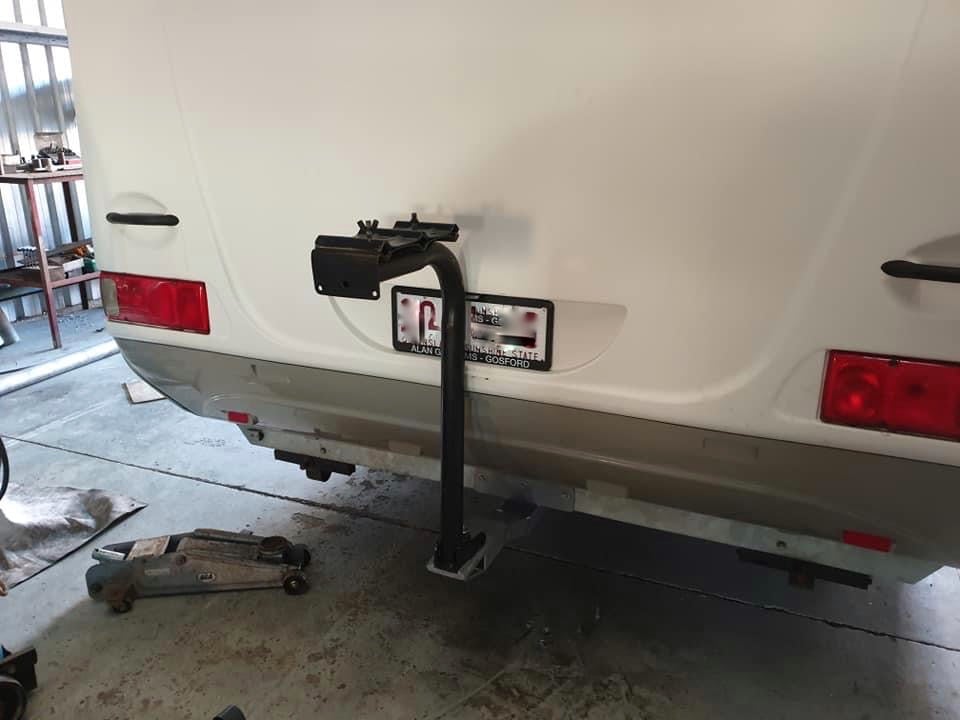
Is your caravan bike rack convenient to use?
Let’s say, for the sake of the argument, you’re able to install a bike rack on your caravan or camper and you’ve ensured you have got around all the issues previously discussed. There’s one last issue you may be faced with.
Inevitably, bike racks will have to be mounted either on the front toolbox on the drawbar, on the rear wall of the caravan, or on the rear bumper. All of these positions will necessarily be high off the ground. Lifting bikes on and off these racks will require a degree of fitness and, possibly, a step ladder of some sort. It can be physically difficult and, if you’re not too steady on your feet, quite dangerous.
We quite often see bikes that have been mounted onto a caravan bike rack that have never been used. Why? Because it is simply too much trouble to take the bikes off and put them back on again after use. You really do need to be certain that you will use the bikes enough to justify the effort.
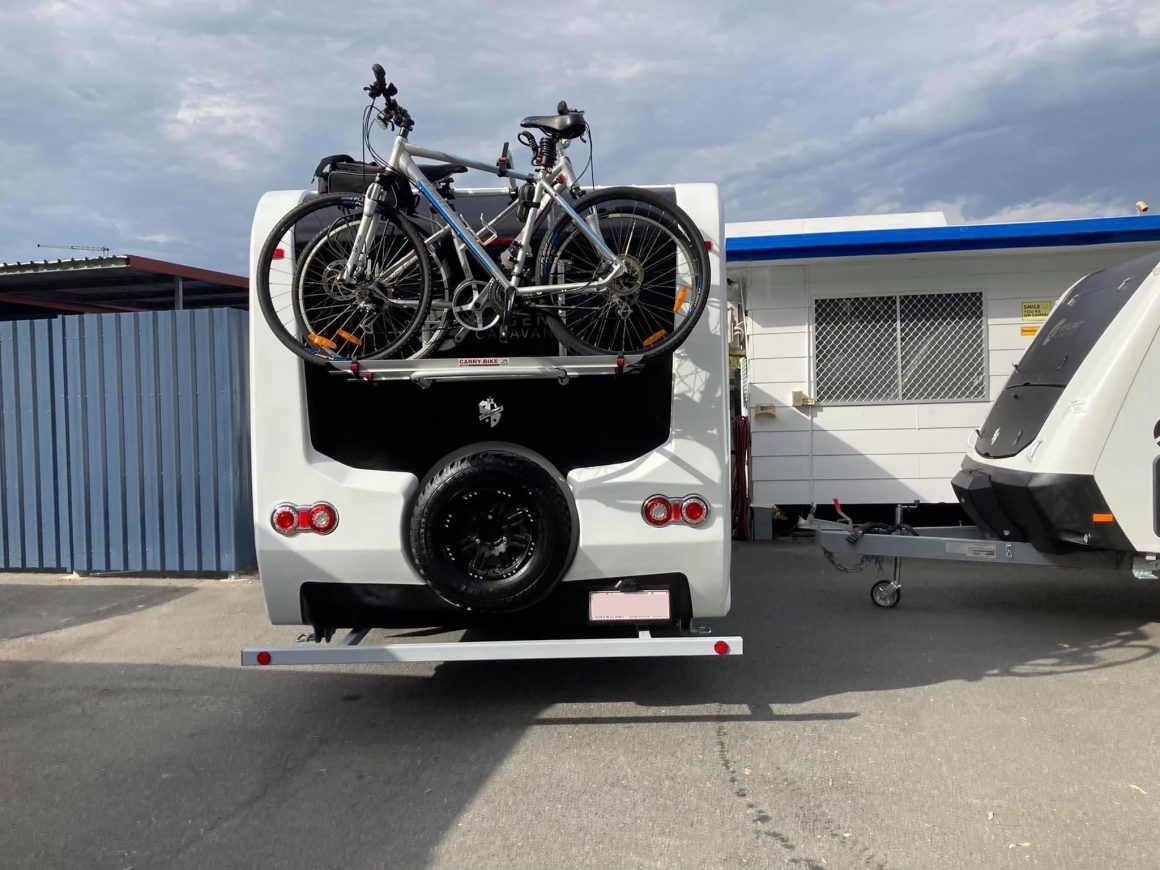
A final word
It may seem like we are trying to discourage you from fitting bike racks to your caravan or camper, but that is simply not the case. All we want to do is point out some of the issues to save you hassles later. If we could offer you one last piece of advice, it would be to thoroughly research your options.
Safe travels!
This article may contain affiliate links to products. We may receive a commission for purchases made through these links.





